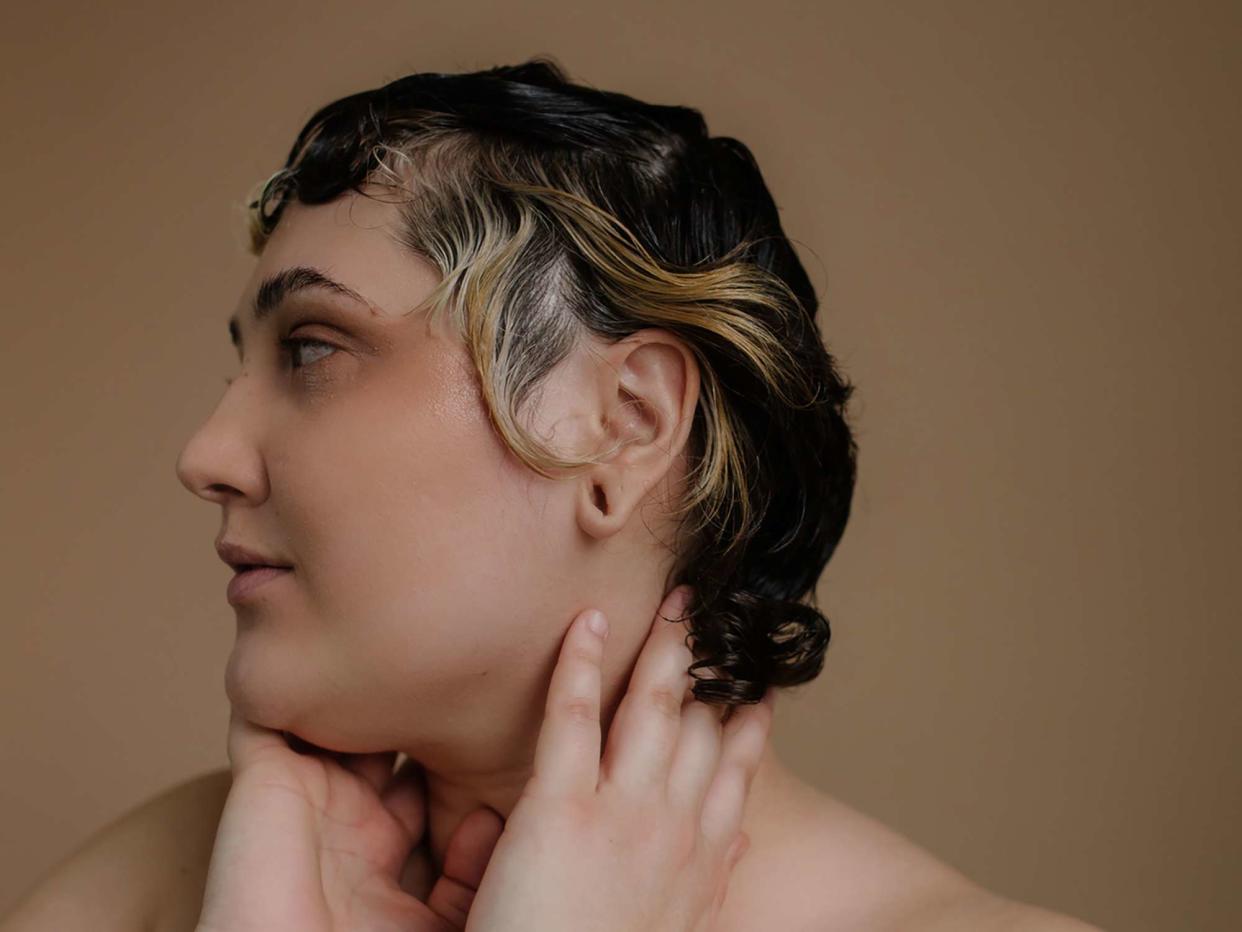Is It Scalp Psoriasis or Dandruff? Derms Share How to Spot the Differences

Asya Molochkova / Stocksy
Psoriasis and dandruff are both fairly common scalp conditions and are often confused. Somewhere between 2 and 3 percent of the population has psoriasis, and about half of these people have scalp psoriasis, according to the National Psoriasis Foundation. Meanwhile, dandruff is far more common, affecting about half of the population globally.
Scalp psoriasis and dandruff share some common symptoms, but once you know what to look for, these two conditions aren't difficult to tell apart. Here's one hint—if your scalp is flaky, you're likely experiencing dandruff. If you notice thick scales on your scalp, however, psoriasis may be the culprit.
Ahead, board-certified dermatologists Jill Salyards, MD, and Azadeh Shirazi, MD, share everything you need to know about dandruff and scalp psoriasis, including symptoms, treatments, and how to tell them apart.
Jill Salyards, MD, board-certified dermatologist at Refine Dermatology.
Azadeh Shirazi, MD, board-certified dermatologist at La Jolla Laser Dermatology.
What Is Scalp Psoriasis?
"Scalp Psoriasis is an autoimmune condition of the skin where your immune cells send abnormal signals causing skin cells to grow too fast, leading to a build-up of skin cells on the surface [that appear] as thick, silvery-white scaly patches called plaques," says Shirazi. On darker skin tones, the patches may be more violet or purple, with gray scales.
The scales can also be fine and look similar to dandruff. "Typically, the patches are scattered and can be one or several in number," Shirazi says. "It can also affect the entire scalp or even be seen behind or inside the ears, forehead, and neck."
Psoriasis can happen anywhere on the body and is common on the scalp. Estimates show that somewhere between 45 and 56 percent of people living with psoriasis have scalp psoriasis. "Those affected by psoriasis have a genetic susceptibility often triggered by factors such as infections, medications, stress, hormones, and physical trauma to the skin," says Salyards. "Scalp psoriasis can also be associated with psoriatic arthritis."
Psoriasis often cycles through periods where symptoms are minimal and then flare. Flares can be triggered by infections and illnesses, cold and dry weather, skin injuries, smoking, and alcohol consumption, among other things.
What Is Dandruff?
Dandruff, also known as seborrheic dermatitis, is a common skin condition that affects areas of the skin that are rich in oils glands, Salyards tells us. It's common on the scalp, ears, face, and chest and often involves flaky skin. "Dandruff is due to overproduction of oil and overgrowth of a yeast called Malassezia, which feeds on the oil and breaks it down," Shirazi says.
Dandruff is also often accompanied by an oily or greasy scalp. It may feel like dandruff appears out of the blue, but the condition is often made worse by factors including stress, infrequent shampooing, and dry and cold weather.
How Can You Tell Dandruff and Scalp Psoriasis Apart?
Scalp psoriasis typically involves red plaques with thick, silver scales, while dandruff usually has fine and waxy flakes that are usually itchier. Dandruff is often accompanied by an oily scalp. Scalp psoriasis will look powdery with a silver sheen, whereas seborrheic dermatitis is more yellow and greasy, according to the National Psoriasis Foundation.
Another way to differentiate between scalp psoriasis and dandruff is by paying attention to where else you're noticing flaking. "Common areas to have psoriasis include elbows, knees, low back, buttocks, and the belly button, while dandruff will appear in the eyebrows [and] around the nose, ears, and chest," Salyards says.
How Can You Treat Scalp Psoriasis?
To treat scalp psoriasis, you'll usually need a prescription medication such as a topical steroid, retinoid, vitamin D derivative, or a medication that targets the immune system. Light therapy and medicated injections can also be helpful. "There are also some over-the-counter shampoos that can be used to decrease inflammation and scales, including salicylic acid shampoos and tar shampoos," Salyards says.
How Can You Treat Dandruff?
Dandruff can be treated with a medicated shampoo that includes zinc pyrithione, ketoconazole, salicylic acid, or selenium sulfide. "They can be used alone or in rotation, which can be more effective," Salyards says. "If there is itching or the dandruff is more severe, topical steroids may also be considered."
When to See a Doctor
A lot of the time, dandruff can be treated without seeing a doctor, but you should definitely see a medical professional if you think you might have psoriasis. If your condition isn't responsive to over-the-counter treatments after four to six weeks, it's important to see a dermatologist. You'll also want to see a doctor if you're experiencing significant itching, body rashes, or joint pain.
The Final Takeaway
Dandruff and scalp psoriasis may have similar symptoms, but you can usually tell them apart without much trouble once you know what to look for. With scalp psoriasis, thick scales are common, whereas dandruff is finer, flakier, and itchier. Many times, dandruff is accompanied by a greasy scalp or oily skin.
It's also helpful to pay attention to see if you have similar symptoms in other areas of your body. For example, psoriasis is common on the scalp, elbows, knees, lower back, and buttocks, and dandruff is more common on the scalp, eyebrows, nose, ears, and chest.
Dandruff and psoriasis are both treatable conditions, although treating them can sometimes be challenging. If you're experiencing symptoms of either scalp psoriasis or dandruff that you're concerned about, it's a good idea to speak with a dermatologist or your primary care physician.
Related:

